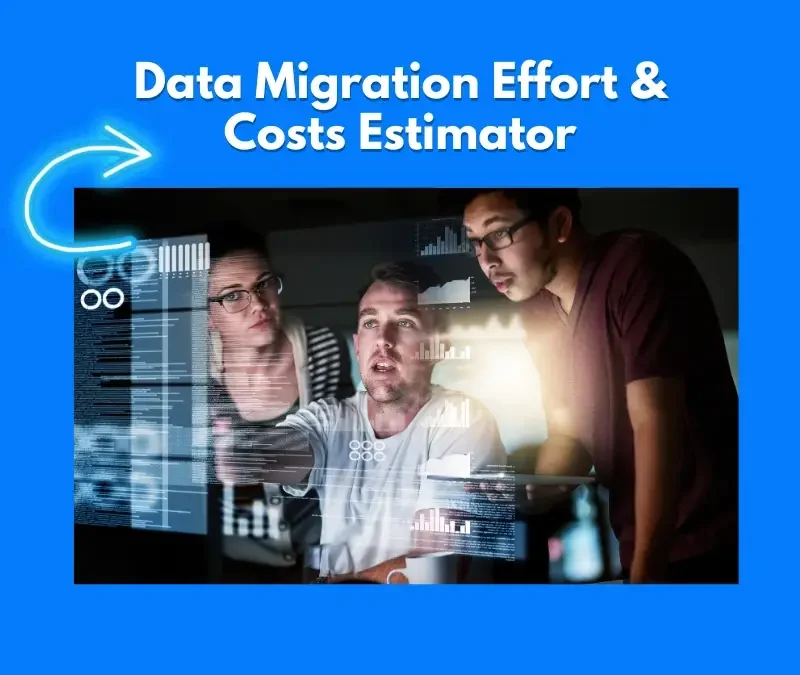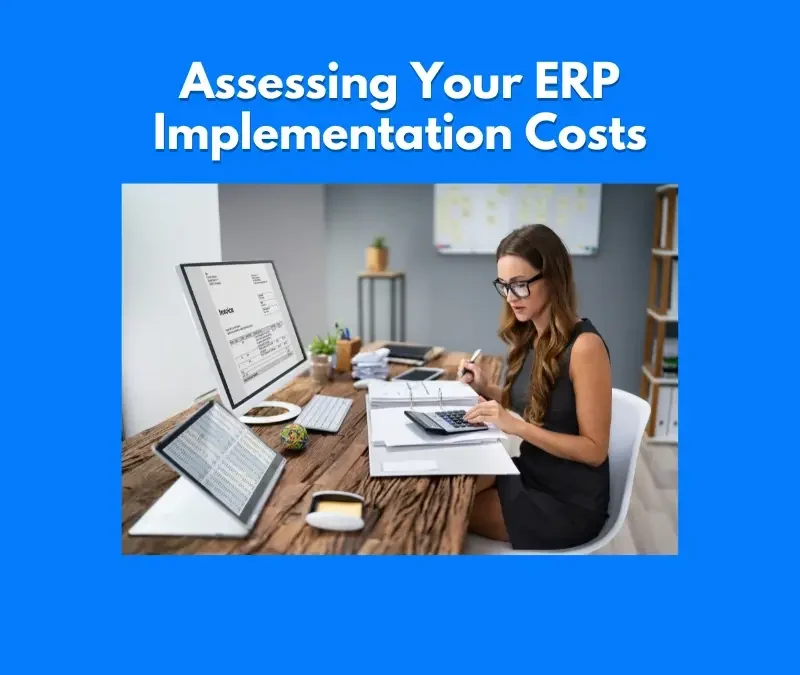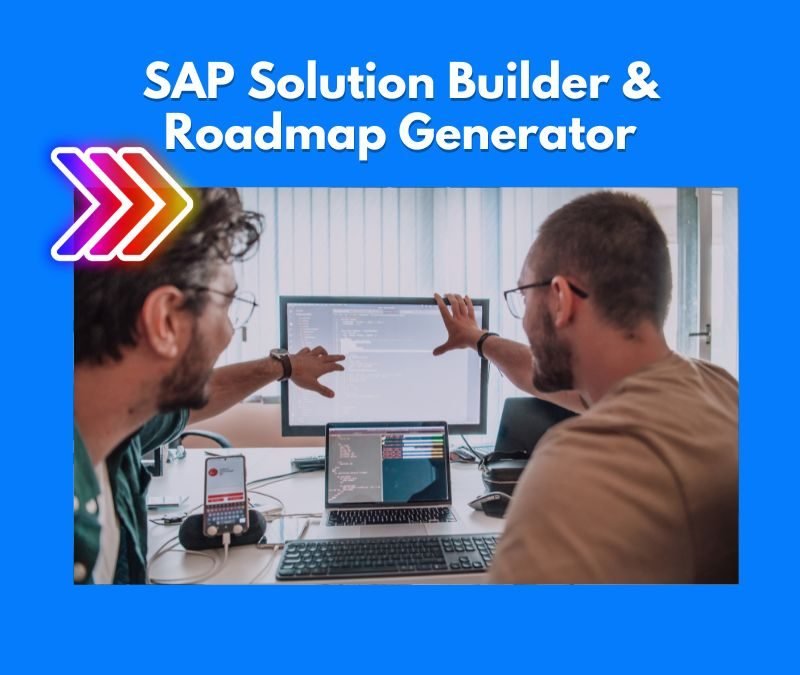SAP Modules
SAP SD Mistakes That Can Break Your Sales Process
Noel DCosta
- Last Update :
I’ve been in sales and operations meetings where SAP SD was up and running, orders flowed through the system fine, but customers were still upset. Not because the system failed, but because the promised delivery dates were never realistic.
In one rollout after a full SAP implementation, the order-to-cash steps were built exactly as designed. Looked great on the process map. But no one checked how stock updates were coming from production. Sales told customers “five days.” Manufacturing knew it was closer to ten. That gap cost more than just late deliveries — it cost trust.
I’ve also seen what happens when data governance takes a back seat. Old pricing conditions, customer master records missing key fields, tax codes that don’t match… these little things can block orders or spark invoice disputes before anyone realises what’s wrong.
Sometimes the real improvement isn’t adding more SD configuration. It’s connecting SD to the processes around it. If you’re selling to government or regulated clients, public sector compliance needs to be baked in from the start. And if finance and sales aren’t aligned on payment terms, you can end up shipping product with no clear plan to get paid.
This isn’t about making SD “more technical.” It’s about making it work in the real world. In the rest of this piece, I’ll walk through where sales processes usually break, how to fix them quickly, and what habits keep the whole order cycle running smoothly.

SAP SD manages the entire sales process from customer inquiry to final billing.It ensures smooth integration between sales, logistics, and finance operations in a business.
10 Key Takeaways About SAP SD (Sales and Distribution)
-
See the whole order-to-cash story – When SAP SD is set up right during your SAP implementation, you can follow an order from the moment it’s created to the moment payment lands. No blind spots.
-
Keep customer records clean – Out-of-date addresses, missing tax numbers, or old contacts slow everything down. Good data governance means fewer calls to fix basic mistakes.
-
Pricing only works if it’s maintained – SAP SD can handle complex pricing, but if rates aren’t reviewed regularly as part of ERP management, you’ll end up with disputes you didn’t need.
-
Promise dates you can keep – Delivery commitments rely on live stock and production data. That means tight links with planning and production processes.
-
Stay in sync with MM and PP – Sales isn’t an island. If material and production data are wrong, SAP SD passes those errors straight to the customer.
-
Know where the shipment is – With the right setup, you can see where goods are and warn the customer before they have to ask.
-
Bill right the first time – SAP SD feeds finance directly. Wrong tax codes or account links can block invoices, so compliance alignment is key.
-
Use credit limits wisely – Credit checks in SAP SD help avoid bad debt, but only if the credit data is kept current.
-
Meet every rule that applies – In regulated sectors, SAP SD must handle the paperwork and reports covered in public sector compliance.
-
Make the data work for you – SAP SD data can feed useful sales and delivery reports if it’s tied into your wider reporting structures.
What is SAP SD?
Basically, SAP SD (Sales and Distribution) is a module within SAP’s ERP system that handles a company’s entire sales process.
It manages everything, whether that be initial customer inquiries to quotations, order processing, shipping, delivery, and billing. Its main purpose is to streamline your operations and make your life easier.
SAP SD has been around since the 1990s, when SAP introduced its R/3 system. Back then, it was pretty basic compared to today’s version.
Over the years, it’s evolved significantly, especially with the shift to SAP ECC and now S/4HANA. Each iteration has added more functionality and better integration capabilities.
Within the SAP ecosystem, SD doesn’t work in isolation. It’s tightly connected with other modules like Materials Management (MM), Production Planning (PP), and Financial Accounting (FI).
Your inventory, production schedules, and financial records all stay in sync with your sales activities, and having all this integration just makes your life that much easier.
I saw this firsthand with a manufacturing client who reduced their order-to-cash cycle by 40% after implementing SAP SD. Their sales team stopped chasing paperwork and started focusing on customers. Their shipping department always knew what needed to go out.
And accounting got paid faster. That’s real business impact.
What is SAP SD (Sales and Distribution)
| Area | Description | Role in Business Process |
|---|---|---|
| Sales Order Management | Handles the complete order lifecycle from order entry to delivery and invoicing. | Ensures accurate order processing, pricing, and tracking for customer satisfaction and billing. |
| Pricing and Conditions | Manages pricing structures including discounts, surcharges, taxes, and customer-specific terms. | Supports flexible pricing strategy aligned with sales contracts and promotions. |
| Availability Check (ATP) | Checks product availability in real-time before confirming orders. | Prevents overpromising, improves delivery reliability, and supports planning accuracy. |
| Shipping and Delivery | Covers picking, packing, route scheduling, and delivery confirmation. | Ensures timely and compliant product distribution to customers. |
| Billing and Invoicing | Generates invoices from delivery or sales orders and integrates with FI for accounting. | Enables accurate revenue posting and financial reconciliation. |
| Credit Management | Monitors customer credit limits and blocks orders if limits are exceeded. | Reduces financial risk by enforcing credit policies during order processing. |
| Returns and Complaints | Manages return orders, credit memos, and customer complaints. | Supports post-sales service and maintains customer satisfaction levels. |
| Partner Determination | Identifies roles like sold-to, ship-to, bill-to, and payer for each transaction. | Enables correct transactional flow and document processing in sales cycle. |
| Integration with MM and FI | SD integrates tightly with Materials Management and Financial Accounting. | Supports inventory checks, cost posting, and end-to-end order-to-cash process. |
What Powers SAP SD? Here are the Components

Alright, so what exactly makes up SAP SD? Let me walk you through the main components that actually matter for your business.
1. Sales Order Processing is basically where it all starts.
This is the real core of SAP SD. When someone buys from you, all the details are acquired- products, quantities, delivery dates, special requests.
The best part is that once you enter this information once, it flows into all the departments of the business, meaning there is no need for duplicate data entry or playing detective to find order details.
2. Pricing and Conditions is probably the most underrated part.
You know how frustrating it is when different sales channels show different prices? This completely fixes that problem.
You can set up all your pricing rules, discounts, special promotions, and customer-specific deals in one place. Companies actually discover that they were practically giving money away before they got this straightened out.
3. Shipping and Transportation takes care of everything after the customer hits “buy.”
It figures out shipping methods, creates all the delivery paperwork, plans the best routes, and keeps everyone in the loop about where things are.
Your warehouse people get what they need, shipping teams get their docs, and customers know when their stuff will arrive.
4. Billing and Payment Processing automatically creates invoices based on what’s been shipped or ordered.
It handles all the complicated scenarios too – partial shipments, returns, credit notes, you name it. And here’s the thing – it talks directly to your accounting system, so sales and finance finally stay in sync.
5. Credit Management helps you avoid those awkward “where’s my money” situations.
It checks credit limits before accepting orders and can flag risky ones for you to review. This saves you from that frustrating cycle of chasing payments from customers who were overextended to begin with.
6. Sales Information System gives you the real insights you need to make smart decisions.
Want to know your bestsellers? Your most profitable customers? Which sales people are actually delivering results? This puts that information right at your fingertips.
When these components work together, they create a smooth journey from when an order comes in until the money hits your bank account. It closes those gaps where things usually fall apart.
Key Components of SAP SD (Sales and Distribution)
| Component | Function | Business Role |
|---|---|---|
| Sales Order Processing | Creates and manages sales documents such as quotations, orders, and contracts. | Controls the core transactional flow in the order-to-cash cycle. |
| Pricing and Conditions | Manages condition types, pricing procedures, and discount/surcharge logic. | Defines flexible pricing strategies for different customers and markets. |
| Billing | Generates billing documents from deliveries and sales orders; integrates with FI. | Drives revenue recognition and financial posting into the general ledger. |
| Shipping and Delivery | Covers shipment scheduling, picking, packing, and goods issue posting. | Ensures accurate logistics execution and supports delivery compliance. |
| Credit Management | Monitors credit exposure, manages limits, and integrates with FI-AR. | Reduces credit risk by enforcing credit checks at sales order and delivery level. |
| Availability Check (ATP) | Performs real-time check of product availability before order confirmation. | Prevents overcommitment and enhances delivery reliability. |
| Text and Output Control | Manages customer communications and document outputs (PDF, EDI, print). | Automates order confirmations, invoices, and shipping notices. |
| Partner Determination | Automatically assigns customer roles (sold-to, ship-to, bill-to, payer) in transactions. | Enables correct flow of documents and accounting entries. |
| Sales Information System (SIS) | Provides analytical reporting for sales volumes, revenue, and performance. | Supports sales planning and performance tracking with historical and real-time data. |
| Returns and Complaint Processing | Handles returned goods, credit memos, and service complaints. | Supports post-sales activities and customer satisfaction follow-up. |
Inside SAP SD’s Most Critical Sub-Modules
Let’s look into the specialized sub-modules in SAP SD that you need to know about. These might not always be in the spotlight, but depending on your business, they could be total game-changers.
1. Basic Functions include all the foundational elements you’ll definitely use regardless of your industry.
Essentially, you have control of master data management, where you’ll store your customer information, material details, and pricing data.
This is essentially your single source of truth. It also includes output determination which handles your order confirmations, invoices, delivery notes, and any other documentation needs you might have.
2. Foreign Trade is a necessity if you sell across international borders.
There’s paperwork, compliance issues, and regulations that change constantly. This module takes care of the complex export/import documentation, figures out duties and taxes, and helps make sure you’re not accidentally breaking any trade laws.
If you’ve ever had a shipment stuck in customs, you already understand why this matters.
3. Transportation is way more detailed than regular shipping functions.
It helps with the complex stuff – planning multi-stage routes, figuring out actual shipping costs, finding the most efficient delivery methods, and keeping tabs on your shipments.
For businesses with serious logistics needs, this can save you tons of money in the long run.
4. Billing handles those situations where simple invoicing just doesn’t cut it.
Maybe you need milestone billing for projects, or subscription billing for services, or complex rebate calculations. If your pricing and billing isn’t straightforward, you’ll definitely appreciate having this.
Sub-Modules of SAP SD (Sales and Distribution)
| Sub-Module | Core Functionality | Business Use |
|---|---|---|
| Sales Support (SD-CAS) | Manages customer inquiries, quotations, and sales activities with CRM-like tools. | Supports presales activities, tracks leads, and improves customer acquisition. |
| Sales (SD-SLS) | Handles sales order creation, contracts, and item-level conditions. | Drives the core sales cycle and order fulfillment processes. |
| Shipping (SD-SHP) | Manages delivery scheduling, transportation planning, and goods issue. | Ensures timely dispatch and accurate logistics execution. |
| Billing (SD-BIL) | Creates invoices, credit/debit memos, and integrates with Financial Accounting. | Automates revenue capture and enables compliance with financial policies. |
| Credit Management (SD-CM) | Performs credit checks and monitors credit limits across customer accounts. | Prevents credit risk and enforces financial controls at order and delivery stages. |
| Foreign Trade/Export (SD-FTT) | Handles compliance for international trade including export licenses and documentation. | Ensures global trade compliance and documentation accuracy for cross-border sales. |
| Transportation (SD-TBA) | Plans shipments, routes, and carrier selection integrated with delivery processing. | Optimizes outbound logistics and reduces freight costs. |
| Electronic Data Interchange (SD-EDI) | Enables automatic transmission of documents like orders, invoices, and shipping notices. | Improves transaction speed and reduces manual data entry errors with partners. |
| Condition Technique (SD-BF) | Controls pricing, discounts, surcharges, and tax configurations using access sequences and condition records. | Enables dynamic pricing logic and complex commercial scenarios. |
The Real Reasons How SAP SD Drives Successful Business

So why should you actually care about SAP SD? Let me explain why it matters for your bottom line.
1. First off, it completely transforms your sales processes.
Everything from Order to cash gets streamlined. Those manual handoffs between departments? Gone.
The time your team spends hunting down order information? Eliminated. I’ve seen companies cut their order processing time by 60% just by implementing this properly.
2. Then there’s inventory management. SAP SD works directly with your inventory systems, so you’ll always know exactly what you have available to sell.
No more promising products you don’t have or missing sales opportunities because you didn’t realize something was in stock.
3. Your customers will notice the difference too.
They get accurate delivery dates, consistent pricing, and faster response times. When issues come up (and they always do), you’ll have all the information at your fingertips to resolve them quickly.
4. The data you’ll get is probably my favorite part.
You’ll see exactly which products make you the most money, which customers are most valuable, and where your sales process hits snags. Real insights, not just guesswork.
5. Finally, the integration with other SAP modules means your entire business stays in sync.
Sales, purchasing, production, finance – they all work from the same information. That alignment alone is worth the investment.
Related Topics: SAP SD & Order Fulfillment
Production Planning & SD Integration
See how SD order data flows into production planning to streamline fulfillment.
Warehouse Essentials in SD Flow
Learn how EWM ensures timely goods movement for SD-delivered sales orders.
Sales Data Migration Pitfalls
What breaks when you migrate SD master data, and how to prevent it.
Clean Core in SD Customization
How to deliver custom SD logic without breaking the core or upgrades.
Where SAP SD Projects Go Wrong and How to Avoid It
Where SAP SD Projects Go Wrong
| Failure Area | Cause | Resulting Impact |
|---|---|---|
| Incomplete Business Process Mapping | Requirements are not fully documented or aligned with actual sales operations. | System misalignment with business needs, rework, and user rejection. |
| Misconfigured Pricing Procedures | Errors in condition types, sequences, or access records. | Incorrect prices, loss of margin, and customer disputes. |
| Over-customization | Building unnecessary Z-tables, exits, and enhancements without clear ROI. | High maintenance cost, upgrade issues, and unstable processes. |
| Ineffective Data Migration | Master data is incomplete, duplicated, or misaligned between legacy and SAP systems. | Order processing failures, shipment delays, and incorrect invoicing. |
| Lack of Integration Testing | Insufficient testing with MM, FI, and logistics modules. | Breakdowns in order-to-cash flow during go-live. |
| Inadequate User Training | End-users are not properly trained on new SD processes or transactions. | Manual workarounds, low adoption, and increased support tickets. |
| Ignoring Legal and Tax Compliance | Tax codes, export rules, or country-specific logic not correctly configured. | Non-compliance penalties, legal exposure, and invoice rejections. |
| Unrealistic Timeline and Budget | Underestimating complexity of sales processes and cross-module dependencies. | Missed deadlines, scope cuts, and reduced solution quality. |
Look, I’m not going to sugarcoat it – implementing SAP SD comes with some real headaches you should know about.
1. Implementation projects can go off the rails very easily.
I’ve watched companies get stuck in implementation hell for years because they could not be clear about what they actually needed.
They tried customizing every little thing and got bogged down in complexity. You have got to be super realistic about your must-haves versus nice-to-haves.
2. Getting your team on board? That’s another big hurdle. Your sales folks already have their ways of doing things.
They have got their spreadsheets, their workarounds, their comfort zones. Now you’re dropping this new system on them that looks complicated at first glance.
Without solid training and making crystal clear how it helps them personally, they’ll drag their feet or just find ways around it.
3. The integration stuff gets really tricky. Your SAP SD needs to play nice with everything else in your technology ecosystem.
If you have got older systems hanging around (and who doesn’t?), connecting everything smoothly can turn into a technical puzzle that gives your IT team nightmares.
4. Moving your existing data over? Total pain in the neck.
All your customer records, product details, pricing structures – everything has to transfer correctly.
If garbage data goes in, you’ll get garbage results out. I’ve seen companies realize too late that their data was a mess.
5. And let’s just talk money for a second. These implementations are expensive.
Beyond the obvious stuff like software licenses and consultant fees, you’ve got your team’s time, possible business disruptions when you switch over, and ongoing support costs that can really add up over time.

See How I Make Your ERP and AI System Selection or Implementation right for you.
ERP & AI System Selection – Identify and choose the right ERP or AI-enabled platform to fit your business needs.
Project Support & Recovery – Keep your project on track or bring failing implementations back under control.
ERP Modernization – Transform existing ERP systems to modern, efficient, and scalable ERP environments.
GET IN TOUCHWhat You Must Know Before Starting SAP SD Implementation

So you’re thinking about implementing SAP SD? Hold up. There are a few things you really need to think about first. I’ve seen too many companies rush in and regret it later.
1. Start by getting super clear on what you actually need.
Why are you really doing this? What specific problems are troubling you right now? Don’t just implement SAP because your competitors are or because it sounds impressive.
2. Take the time to map out how your sales process works today and pinpoint exactly where things are breaking down.
This homework pays off big time later.
3. What about your team? Are they ready for this kind of change?
Most are not, to be honest. You’ll need to budget for some serious training, and maybe even bring in a few people who’ve worked with SAP before. Your team will make or break this project – that’s just the reality.
4. Be realistic about how long this will take.
Anyone telling you they can get you up and running in a couple months is probably not being straight with you. Depending on how complex your needs are, you’re looking at 6-12 months for a proper implementation.
5. Money-wise, don’t just focus on the upfront price tag.
There are ongoing maintenance costs, support fees, and future upgrades to think about. Look at what this thing will cost you over 5 years to get the full picture.
6. Picking the right partner is huge.
Find someone who’s done this in your industry before – not just someone with an SAP certification. And when they give you references, actually call them and ask the tough questions.
Best Practices to Maximize Your SAP SD Investment
Let me share some practical wisdom I’ve picked up from watching both successful and failed SAP SD projects over the years.
1. First thing’s first – you need super clear goals.
Not just vague stuff like “make sales better.” I’m talking specific targets like “we want to cut our order-to-cash time by 30%” or “reduce shipping errors by 50%.”
Write these down somewhere prominent. When you’re six months into implementation and facing tough decisions, these goals will keep you focused on what actually matters.
2. Don’t cheap out on training.
Seriously. I’ve watched companies spend millions on implementation and then try to save pennies on training. Big mistake.
Your team needs solid initial training, but they also need support as they start using the system for real work. The smartest companies I’ve seen create internal SAP experts – regular staff who get extra training and become the go-to people when colleagues get stuck.
3. That data migration stuff? Start working on it way earlier than you think.
Your current data is probably messier than you realize. Begin cleaning it up months before you need to move it. Run test migrations. Then run them again. Bad data will wreck your new system faster than anything else.
4. Consider rolling this out in stages instead of all at once.
Maybe start with your main product line or your biggest business unit. Learn from that experience before you expand. This approach has saved many companies from major headaches.
5. After you go live, schedule regular check-ups for your system.
Don’t wait for things to break. Technology changes, your business evolves, and your SAP setup needs to keep up. Quarterly reviews will catch issues while they’re still small and fixable.
Best Practices to Maximize Your SAP SD Investment
| Best Practice | Execution Approach | Value Delivered |
|---|---|---|
| Standardize Sales Processes | Align business teams to adopt consistent SD configurations and document flows. | Improves efficiency, reduces errors, and simplifies system maintenance. |
| Leverage Condition Technique Effectively | Use pricing procedures and condition records to reflect real commercial policies. | Enables flexible, scalable pricing without custom development. |
| Integrate with Finance and Logistics | Ensure SD is fully connected with MM, FI, and EWM for a complete O2C flow. | Eliminates process gaps and ensures seamless order execution and billing. |
| Optimize Master Data Management | Maintain clean and validated customer, material, and pricing master records. | Reduces transaction failures and improves reporting and decision-making. |
| Implement ATP (Available-to-Promise) Logic | Configure ATP to confirm availability and accurate delivery dates at order entry. | Improves customer trust and reduces fulfillment issues. |
| Use Output Management Strategically | Automate confirmations, invoices, and delivery notes using smart forms or EDI. | Speeds up communication, reduces manual intervention, and improves traceability. |
| Train Sales and Customer Service Teams | Provide hands-on training and SOPs for SD transactions and exceptions handling. | Increases adoption, reduces errors, and improves responsiveness to customer needs. |
| Monitor Key SD Metrics | Track fill rates, billing cycle time, return rates, and blocked order volumes. | Identifies process bottlenecks and helps drive continuous improvement. |
| Limit Custom Development | Use standard SAP capabilities and only extend where business-critical gaps exist. | Ensures easier upgrades, lower TCO, and long-term system stability. |
Related Topics: SAP SD, Customer Data & Risk
Conversational AI in SAP CX
How chat-driven workflows can improve SAP SD customer response time.
When ERP–CRM Integration Breaks
Sales order sync failures explained—especially relevant for SD-Salesforce flows.
Sales Process Risk Assessment
Key risks tied to pricing, availability, and delivery blocks in SAP SD.
Customer Info Architecture for SD
A real-world SAP case where clean customer master data impacted sales order flow.
Conclusion

SAP SD can be a game-changer for your sales operations, but only if you approach it right.
The components, benefits, and challenges we talked about should give you a solid understanding of what you’re getting into.
The SAP world keeps evolving, with better e-commerce features, mobile access, and smarter analytics soon coming into play. There’s some exciting stuff on the horizon with AI starting to make its way into these systems too.
If your current sales process is giving you headaches, maybe it’s time to take a serious look at SAP SD. Start by figuring out what’s actually broken in your current setup.
Implementation is a journey with some bumps along the way, but with good planning and the right help, you’ll get there. And trust me, when it’s working properly, you’ll wonder how you managed without it.
If you have any questions, or want to discuss a situation you have in your ERP Implementation, please don't hesitate to reach out!
Related Topics: SAP SD Enablement & Governance
Training Sales Teams for SAP SD
How to upskill end users on order entry, delivery, and billing in SD modules.
Governance for Customer Master Data
Secure and standardize SD-critical data like partner functions and credit limits.
Tracking SD Project Milestones
Use project tracking tools to ensure SD config and testing phases stay on course.
BTP Connectivity Issues Affecting SD
Understand how unreliable BTP links can impact order updates and SD APIs.
Questions You Might Have...
1. What is SAP SD?
SAP SD (Sales and Distribution) is the module in SAP ERP that handles customer order management, shipping, billing, and invoicing. It covers the full sales cycle from quotation to payment collection.
2. What is the SD role in SAP?
The SD role focuses on managing sales orders, deliveries, billing, and customer relationship data. It also involves setting up pricing, credit limits, and logistics for goods movement.
3. Is SAP SD a good career?
Yes. SAP SD consultants are in demand, especially in industries with strong sales, distribution, and logistics operations. Career growth is steady if you also learn integration points with FI, MM, and newer cloud modules like SAP S/4HANA Sales.
4. Is SAP SD easy or hard?
SAP SD is moderately difficult. The basics like sales orders and billing are straightforward. Complexities arise in pricing procedures, cross-module integration, and real-world customization needs.
5. Is SAP SD still in demand?
Yes. Companies upgrading to S/4HANA still need SD experts. Demand is stronger for consultants who understand both SAP ECC and S/4HANA versions.
6. Does SAP SD require coding?
No for functional roles. Basic understanding of ABAP helps in writing specifications for developers but coding is not a core requirement for SD consultants.
7. What is the salary of SAP SD?
Entry-level consultants typically earn $60,000–$80,000 annually. Mid-level and senior consultants can earn between \$90,000–\$140,000 depending on experience, location, and project size.
8. Which SAP module is best?
There is no universal “best.” It depends on career goals. SD is strong for people interested in sales processes, logistics, and customer-facing functions. FI is better for finance careers, MM for procurement, PP for manufacturing.
9. What is the job of SAP SD?
The main job is to configure, support, and optimize the SAP Sales and Distribution processes. This includes sales order processing, shipping, billing, credit management, and customer master data management.
10. What is requirement in SAP SD?
Good understanding of business processes in sales, shipping, and billing. Knowledge of basic SAP navigation, SD configuration (SPRO settings), and integration with FI and MM modules is important. Strong documentation and communication skills are also required.
11. Who uses SAP SD?
Large and mid-size businesses across industries, manufacturing, retail, automotive, consumer goods, pharmaceuticals, use SAP SD to manage their sales and distribution activities. Functional consultants, business analysts, and end-users in sales departments work directly with SAP SD.









